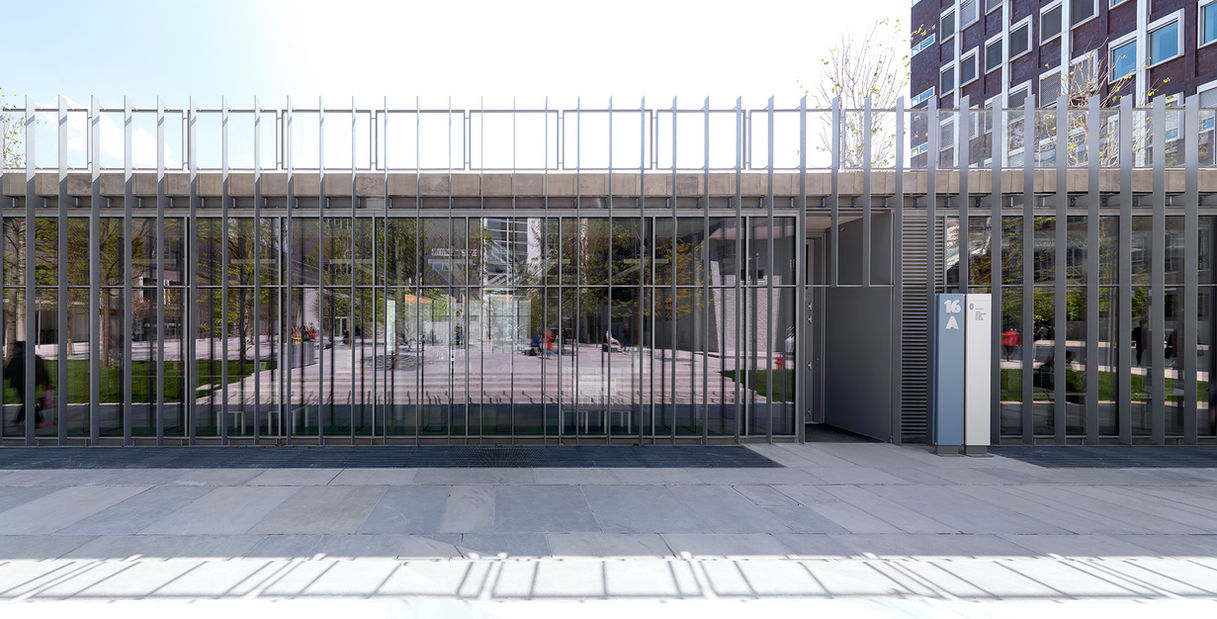
2018
CAMPUS BONARDI | POLITECNICO DI MILANO
Expansion of the Politecnico di Milano's Bonardi Campus
The heart of the Bonardi Campus of the Faculty of Architecture at the Politecnico di Milano has remained for decades as an urban void reserved for pedestrian connection and service areas. Its prominent position, inserted between three architectures designed by Gio Ponti and its strategic and significant role within university life, have made it the protagonist of an innovative design idea signed by Renzo Piano, alumnus of the Polytechnic. The increasingly urgent need for green areas and spaces for study has led to the creation of a new square lined with more than 130 trees, renamed parterre, around which the spaces of the existing buildings would be redeveloped, to which are added the three new elevations housing classrooms and laboratories. A masterplan was therefore created with the aim of improving the building quality and functionality of the university, through the increase of spaces dedicated to students and the enhancement of the existing heritage, and to improve the environmental quality of the campus and the city. The three new buildings are designed from the outset to be versatile and innovative, fulfilling multiple functions. A four-storey building above ground (Building B) houses classrooms for study and photovoltaic panels on the roof; while the other two new two-storey buildings housed laboratories, classrooms, and service spaces, with practicable roofs intended for "open squares" over the city. The masterplan project by Renzo Piano Building Workshop was then developed by Ottavio De Blasi who developed the architectural projects of the innovative and high-performance buildings, supported by TEKNE for the final design of all the systems, including special and industrial ones. The technical and bureaucratic complexity of the construction site, divided into 15 different building interventions and two lots, saw a rigid design of the individual plants, included in a more complex and general total project, which provided both for the independence of the new installations from the pre-existing plants of the Polytechnic, and for integrations and connections to the existing networks, for a high level of calculation, safety and efficiency. From a technological point of view, the buildings are made with a steel frame structure and an entirely dry finishing system. This required a careful and thoughtful final design of the building's systems, mainly inserted in the false ceilings and passing through the beams, suitably slotted and drilled. Added to this aspect is the search for solutions for the building envelope that ensure maximum transparency but adequate protection from radiation, with consequent thermal insulation both in summer and winter, lightening the thermal load of cooling and heating. To achieve this, Schüco® customized self-supporting curtain wall systems were chosen, protected by external metal slats, shading and internal Venetian blinds. The entire design has been attentive, in the various aspects that have also involved the MEP systems, to the aspect of conscious maintenance, with the aim of optimizing the performance of all systems and reducing the need for intervention, with consequent savings in costs and consumption, without sacrificing practical and technological choices that ensure the greatest comfort and practicality. For this reason, terminal radiant heating systems have been installed in the classrooms, installed on the ceiling, and powered by self-produced clean energy. The new aesthetic trends with a high-tech effect have been the ideal solution to combine ease of access and intervention with all the plant networks, left visible along the false ceilings, while also performing an educational function for the students, who can see first-hand the combination of architecture and technology.
DESIGN ARCHITECT
RPBW – Renzo Piano Building Workshop (Concept)
ODB – Ottavio De Blasi & Partners (Architectural design)
CLIENT
Politecnico di Milano
INTERVENTION TIPOLOGY
Construction and Renovation
PROJECT AREA
CULTURE, UNIVERSITY
VALUE OF WORKS
LOCATION
MILANO
YEARS
2015-2018
DATA
Surfaces
7 700 m² – outdoor parterre
4 thousand m2 – new classrooms
1600 m² – Modelling workshop
Biodiversity
130 trees
CERTIFICATIONS AND GOALS
PHOTO CREDITS
Photo Courtesy of Studio ODB
PROJECT CREDITS
Area Tecnico Edilizia – Politecnico di Milano (Construction supervision)
-MEP Final Design (New Construction)





















